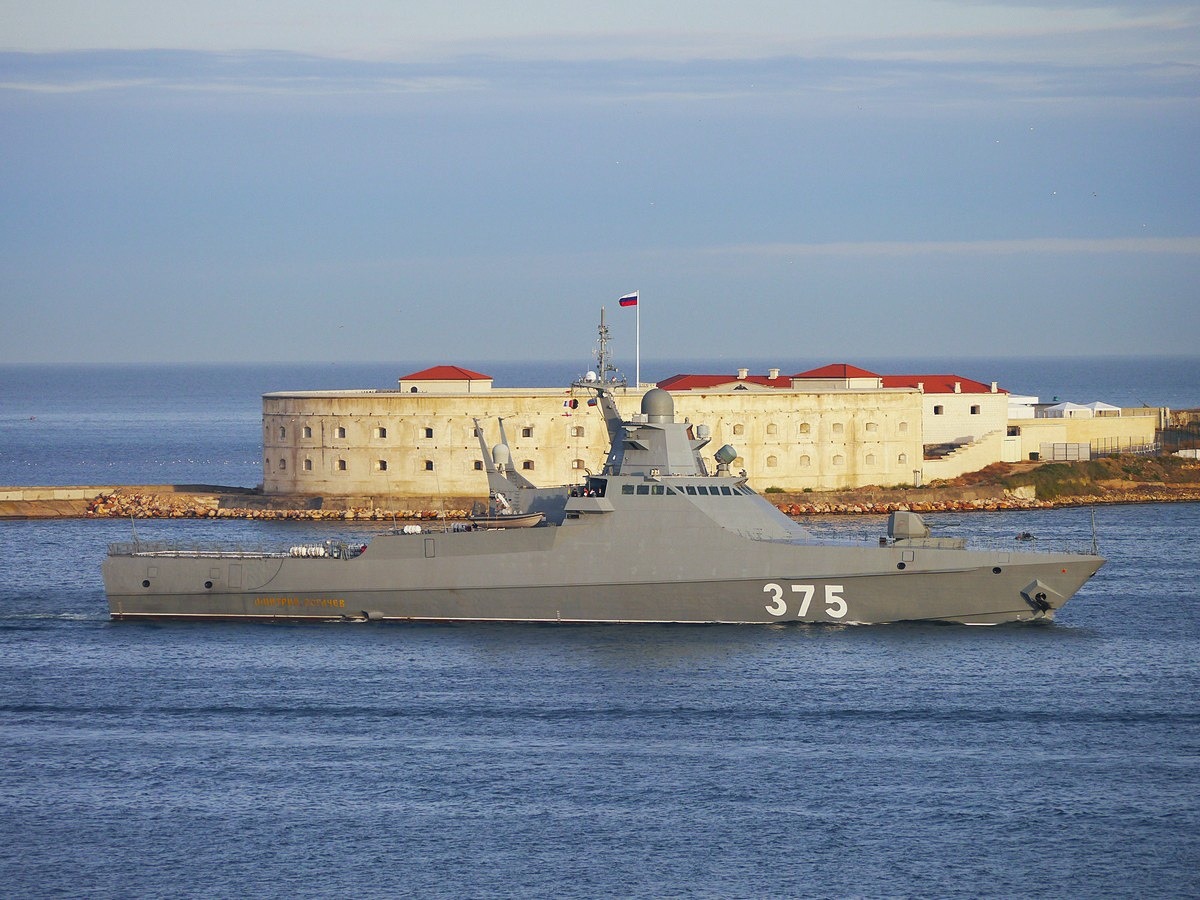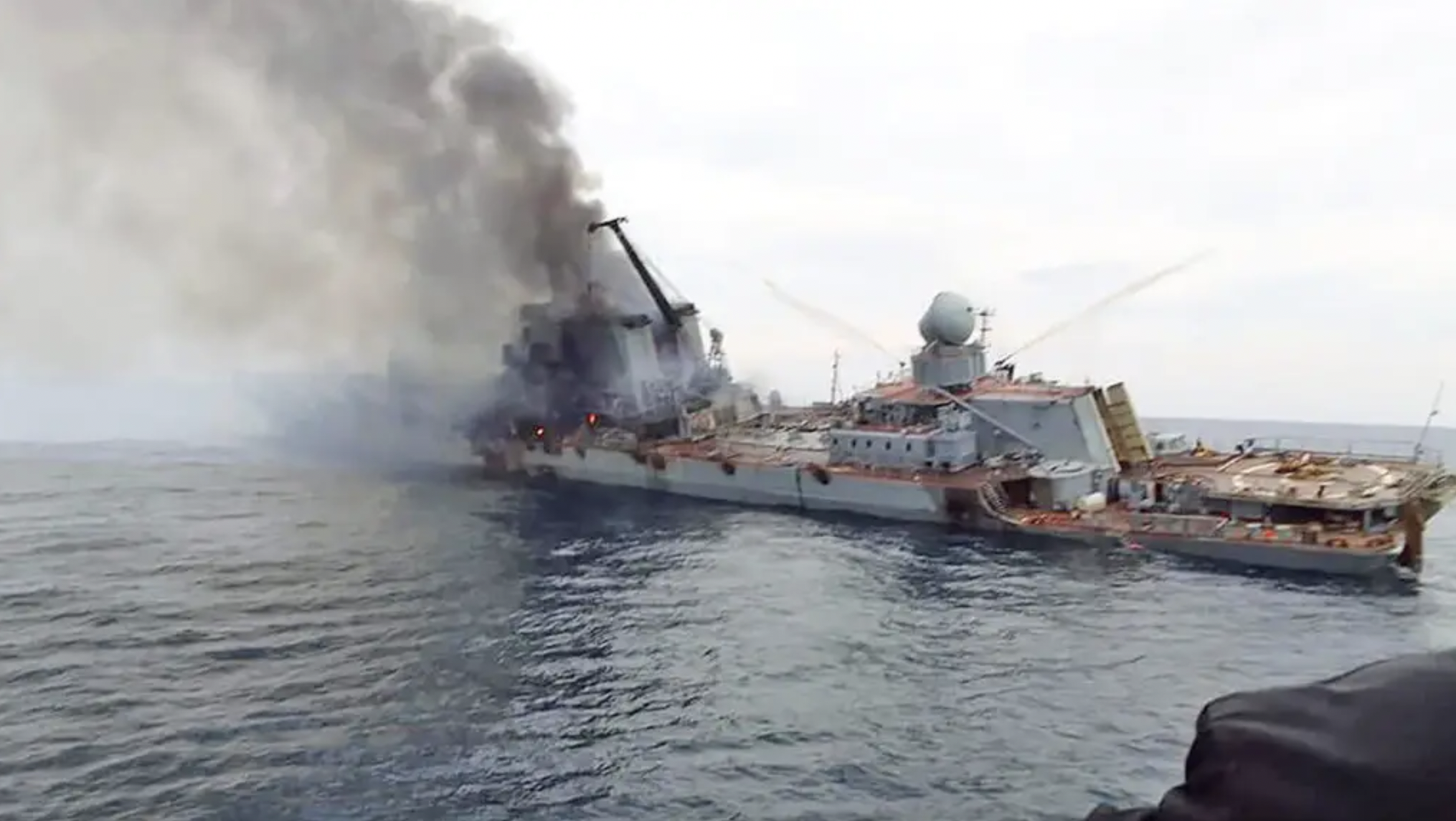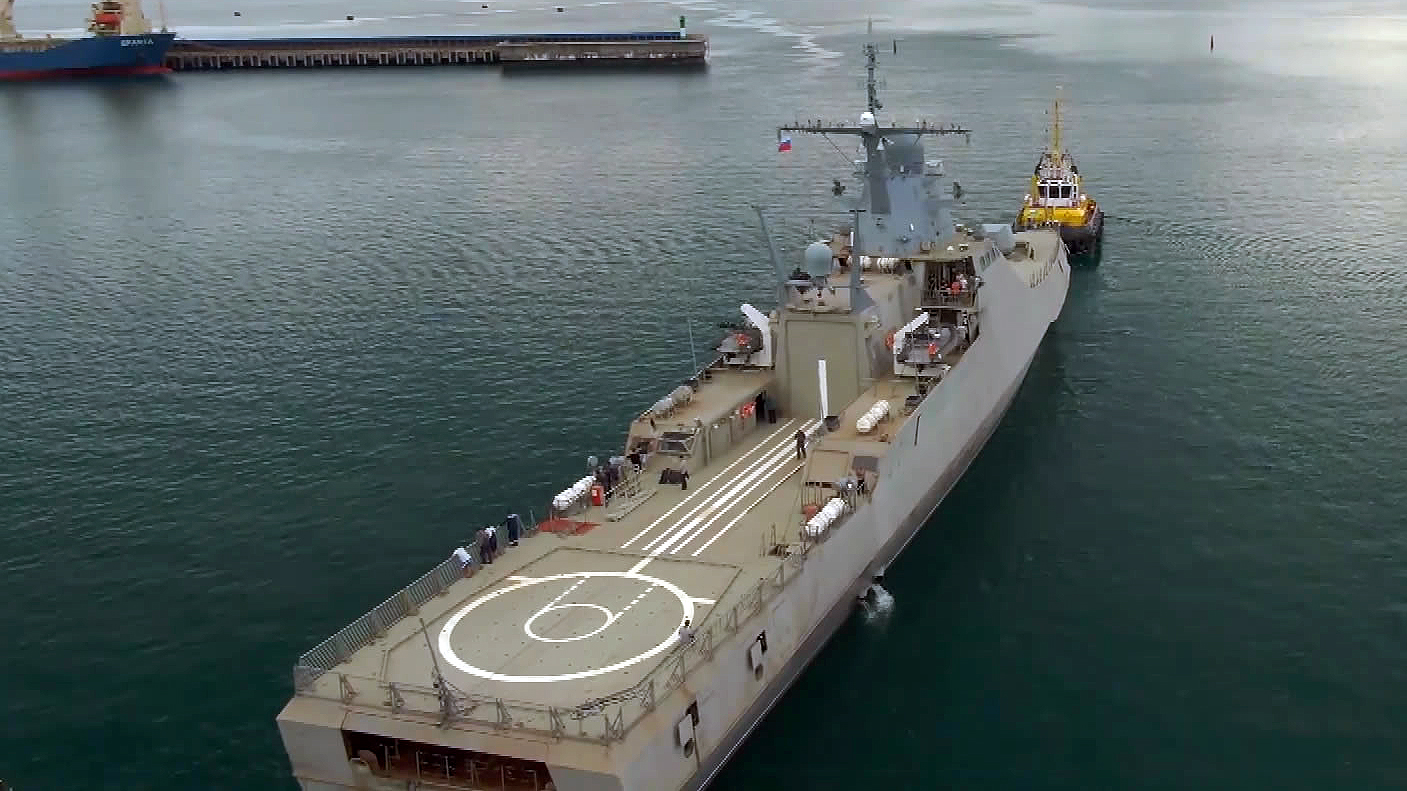Russia claims to have repelled an attack by Ukrainian uncrewed surface vessels (USVs) launched against the Black Sea Fleet corvette Sergey Kotov. While the incident last night remains unconfirmed, it suggests Ukraine may be making good on its promise to fight more widely on the Black Sea, after Russia itself threatened ships making use of Ukrainian ports. All this follows Moscow’s declaration of a naval blockade and subsequent bombardment of these same ports, the latest developments in the complicated issue of the deal that had previously allowed Ukrainian grain to reach world markets.
In a statement, the Russian Ministry of Defense claimed that it destroyed two Ukrainian USVs which were engaged in an attack on the Sergey Kotov, a Project 22160 large patrol ship, one of four of these very modern vessels currently active with the Black Sea Fleet.
“Tonight, the Armed Forces of Ukraine made an unsuccessful attempt to attack the patrol ship Sergey Kotov of the Black Sea Fleet, which performs the tasks of controlling navigation in the southwestern part of the Black Sea, with two sea-going guided unmanned boats,” the Russian Ministry of Defense said.
“In the course of repulsing the attack, both enemy remote-controlled boats were destroyed by fire from the standard weapons of the Russian ship at a distance of 1,000 meters and 800 meters [1,090 yards and 875 yards]. There were no casualties,” the ministry added. “The Sergey Kotov continues to fulfill its tasks.”
The Project 22160 ships, which displace around 1,965 tons and are 300 feet long, have a standard armament that includes a single 76mm automatic gun and a pair of 14.5mm heavy machine guns. These would likely have been used to engage any USVs in the vicinity, with similar weapons apparently having been used by Russian warships to tackle such threats in the past.

The Sergey Kotov and the other vessels in its class can also be configured with modular weapons options. Tor-M2KM air defense systems have also been embarked as a stopgap measure during the war with Ukraine, as seen in the tweet below, complementing the usual complement of shoulder-fired Igla man-portable air defense systems, or MANPADS.
Ukraine, meanwhile, has already made extensive use of USVs in its naval war with Russia. They have been used in attacks on the Black Sea Fleet port of Sevastopol, in Russian-occupied Crimea, including in October and November 2022, March of this year and just days ago. They have also been used against Russian Navy vessels underway in the Black Sea.
While these attacks have not necessarily been very successful in terms of sinking or seriously damaging Russian warships, combined with aerial drone strikes, they have forced Russia to change how it deploys vessels and protects the port of Sevastopol. This has included establishing very complex layered defenses in the air, on land, and at sea around the harbor in Sevastopol, especially at its entrance. You can read more about this issue in our coverage here.
It’s notable that the Russian Ministry of Defense statement points directly to the vessel’s mission of “controlling navigation in the southwestern part of the Black Sea,” referring to the ongoing naval blockade.
This latest crisis was triggered last week when Russia pulled out of a United Nations-brokered agreement that ensured grain exports were able to leave Ukrainian ports. The deal helped prevent a spike in global food prices and reduce the risk of famine in areas of the world most threatened by food shortages. Moscow said that its actions were in response to the Ukrainian attack on the Kerch Bridge linking Russia to the occupied Crimean peninsula, earlier the same day, which also involved sea drones of some type.
On Wednesday last week, Russia issued a warning against all ships heading to Ukraine, stating that it would consider any vessels traveling to Ukrainian ports to be potential carriers of military cargo and their flag countries to be parties to the conflict on the Ukrainian side. Since then, Ukrainian ports — including Odesa and Mykolaiv — have also come under repeated Russian attack. This warning was also followed by an ominous live-fire “exercise,” in the same area, in which a Russian corvette sunk an ex-Ukrainian warship with a supersonic anti-ship missile. You can read about this event here.
The U.S. and U.K. governments have both also said that they believe Russia has laid additional sea mines in the approaches to Ukrainian ports.
Russia’s actions were then met by a threat from the Ukrainian Ministry of Defense, signaling its readiness to fight on the Black Sea, as well as saying it considered all shipping out of Russian and Russian-occupied ports to be potential targets. This new policy came into force at midnight last Thursday.
“The fate of the cruiser Moskva proves that the Defense Forces of Ukraine have the necessary means to repel Russian aggression at sea,” the Ukrainian Ministry of Defense said, making an explicit reference to the sinking of the Black Sea Fleet flagship in April last year, which was the result of an anti-ship missile strike.

Furthermore, officials in Kyiv have also specifically mentioned the use of drone boats in the context of attacking Russian shipping in the Black Sea.
“Ukrainian-made maritime drones are capable of destroying stationary and moving targets anywhere in the Black Sea,” Anton Gerashchenko, current official advisor, and a former deputy minister at the Ukrainian Ministry of Internal Affairs, said on Twitter.
While Moscow has claimed that its attacks on Ukrainian ports have been targeting military infrastructure, it’s clear that civilian targets are also being hit. Ukraine and the United States have stated that agricultural infrastructure and tens of thousands of tons of grain have already been destroyed in Odesa.
Not surprisingly, global wheat prices have climbed considerably in the wake of these actions.
Today, the Kremlin doubled down on its rejection of the U.N.-brokered grain deal, arguing that its own interests — which include a parallel deal to assist Russian exports of food and fertilizer — are “not being implemented.”
Indeed, there’s a suggestion that Russia may now step up its military campaign in the Black Sea and begin targeting civilian shipping there, according to the British ambassador to the United Nations, Barbara Woodward.
While Russia’s President Vladimir Putin has signaled that he would be willing to return to the grain deal, if his terms are met, for the time being, both sides have said they are ready to engage ships leaving each other’s respective ports.
Already last week, the U.K. Ministry of Defense, in one of its regular intelligence briefings, warned that Black Sea Fleet blockade operations “will be at risk from Ukrainian uncrewed surface vessels and coastal defense cruise missiles.”
The apparent attempt to engage the patrol ship Sergey Kotov would suggest that this prediction may well be coming true.
Contact the author: thomas@thedrive.com
